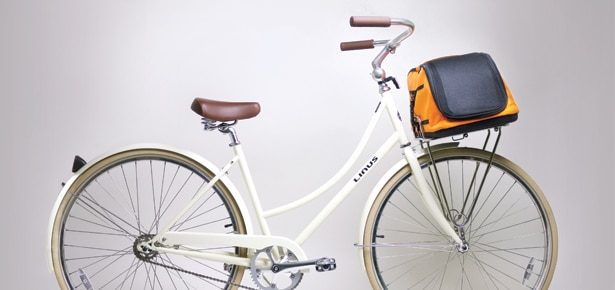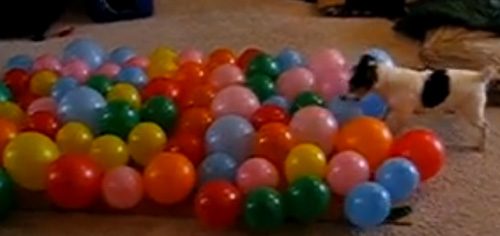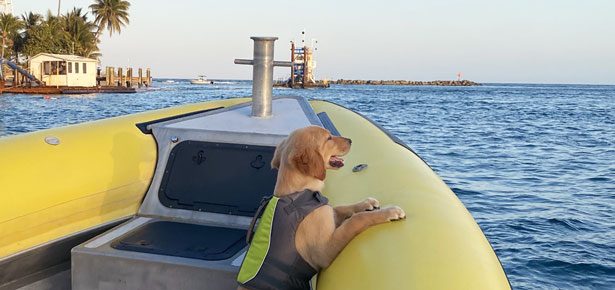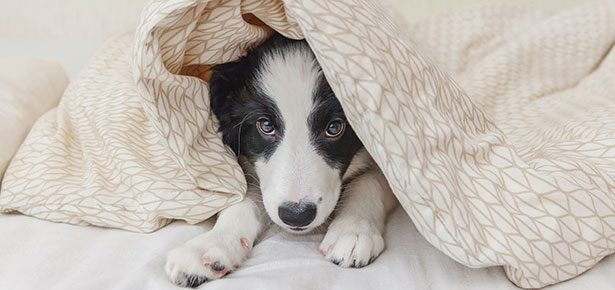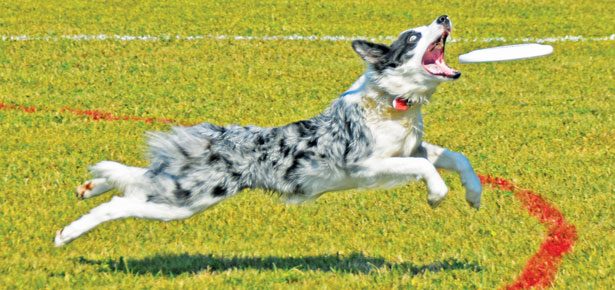The Nose Knows
On the trail of tracking dogs
Tabu, my Cairn Terrier, was missing. I clipped on Bruno’s leash and commanded,
“Search! Find Tabu!” Bruno sniffed. His nose went to the ground. He zigzagged
left, then right. He headed down the ravine, pulling me behind. Blackberry
thorns tore at my clothes. My boots sank into decaying cedar. Bears, coyotes, and cougars
inhabit the wilds of our area and my little Tabu was in danger.
We traversed a stream rumbling with spring runoff. I trusted Bruno, my obsessive
Border Collie-Lab cross, as he began an ascent. It was hot and muggy and the hike up
was tough, an angle that had me close to the ground, nearly crawling. Bruno was tenacious.
A tug: he had found her! Bruno lurched toward Tabu, nearly knocking her over
with a nose nudge. Bruno did his job.
Hot on Tabu’s scent trail, Bruno had been tracking, relying primarily on his sense of
smell, possibly a thousand times more sensitive than that of humans. Dogs possess more
than 220 million olfactory receptors, humans
only 5 million. When a scent can’t be recognized
right away, a dog will sniff a series of
rapid short inhalations and exhalations. This can
be startling to see for the first time. The scent
isn’t washed out as the sniffing actually forces
air into a pocket in the dog’s nose where the
unrecognizable molecules can accumulate and
be deciphered. This allows the dog to distinguish
scents and follow trails.
Tracking dogs are used for search and rescue in urban disaster (911) and avalanche
operations, as well as for police work. Dogs and handlers involved in these operations
are highly dedicated and intensely trained, and must be ready to tackle life-or-death situations
24/7 in all kinds of weather and dangerous conditions.
On the lighter side, the nose is put to the test in the non-competitive sport of tracking,
where dogs decipher scents along a trail in order to locate “indicate” articles and find
humans. Through the Canadian and the American Kennel Clubs, dogs can earn titles
such as Tracking Dog (TD) or Urban Tracking Dog (UTD). To achieve a TD, a dog must
follow a stranger’s track approximately 450 meters long with two to four turns, “aged”
for at least 30 minutes, and with a glove at the end. In Urban Tracking, dogs are tested
on varying terrain: a grassy baseball park, non-vegetated areas, parking lots, schools, and
office sites.
To learn more about tracking, I traveled out to Canine Harmony Dog Training
Academy in Surrey, British Columbia, just a trail away from the boundary that divides
the United States and Canada.
I arrive to find a gathering of trackers readying their dogs with body harnesses and
long leashes. Blackberry brambles, fruit trees, and weathered barns border the training
fields. The smell of burning cherry wood fills the air. Smoke billows out of a rusty barrel
that provides heat to onlookers on this crisp March morning. This is where tracking
comes alive, where human scent trails are made and tracking dogs lead their handlers in
search of humans, squeaky toys, and favourite treats.
“Every weekend the club will be out in the fields learning
and practicing,” says Chanone Sanders, master dog
trainer. “To get started, you need the desire to learn tracking
and a dog you’d like to track with.” Sanders holds a
seminar once a month to help people learn the theory and
“book work” behind tracking.
Today, she leads new and experienced trackers to the
fields insisting everyone stay to the right of the orange
cones, out of the working field. “We want a clean slate so
the dogs can focus on the tracks.”
She asks for a volunteer, “Who wants to go get soggy
in the grass?” Monika Mallow, courageous in her sturdy
boots, steps forward. Sanders tells her how to lay a track:
“Stand for just a second, line up two objects with something
in the distance. Walk that line, stop, turn 90 degrees,
walk, and hide in the grass. Sit quietly.”
Mallow lays a track for Arlo, the American Staffordshire
Terrier, and hides. She has the dog’s favourite ball stuffed
inside a glove. Arlo leads owner Samantha Andress as
he “air scents”: testing the odours that float above the
ground. “Find it!” Samantha commands. Arlo’s nose goes
down. He circles and begins sweeping big arcs, “coursing”
across the scent track.
“There’s a strong breeze taking the scent south,”
Sanders reports. Arlo’s on the “fringe” but keeps on tracking.
He nears the weeds. With a sudden jump, he’s found
her. Mallow cheers and tosses his ball.
Next up is long-lashes Maggie, a Labrador-Golden
Retriever mix. She gets a good sniff of her favourite treats.
Once again, Mallow braves the soggy field taking Maggie’s
treats with her. Sanders turns Maggie around and instructs
owner, Marion Hewko, “We don’t want Maggie to see, we
want her to use her nose. They know how to smell. We teach them the only way to do it is by scent—then the nose kicks in.”
As Hewko walks Maggie to the line, Sanders continues: “Okay, bring Maggie to start
then out—slow, slow, slow. Let her go ahead of you. Find it!”
Maggie takes off, showing a “deep nose”— a nose close to the ground and buried
in the grass. She stops. Sanders calls, “She stops, you stop. Let her pull you.” Maggie
backtracks, air scenting, high nose, picks up the scent. Off she goes again. She discovers
Mallow lying in the grass. Maggie jumps around, tail wagging, celebrating.
Lilly the Australian Shepherd is next. It’s her first time. Owners Shawn Gerenski and
Sharon Warren watch as Sanders puts a harness on Lilly. “This way she won’t hurt
herself. Collars pull.” she explains. The trainer tells Gerenski, who is going to lay the
track, that he should talk to Lilly before he goes out. Gerenski walks a straight line into
the field. Sanders covers Lilly’s eyes. Gerenski hides.
Search time. Warren commands Lilly, not with “Find it,” but instead calling:
“Where’s Daddy? Find Daddy!” Lilly searches. Air scenting. Nose goes to the ground.
Big sniff. Aha! Daddy’s scent. She’s off and galloping an absolutely straight line to
Gerenski, who cheers and tosses Lilly’s favourite red squeaky toy.
Tracking is a fun way for dogs and handlers to exercise, challenge themselves, and
enjoy social time with other teams. Cindy O’Neil says it has helped her big mixedbreed
dog, Brooke, to overcome her fear. “Brooke’s a rescue dog,” says O’Neil. “When
we brought her home, she was very afraid. I signed her up for tracking to build confidence.
It made her more outgoing.” Brooke is now one of the “diehard trackers” who
just can’t get enough of the sport.
“It’s an activity that bonds us with our dogs in a way that no other event can,” says
Sanders. “It’s a quiet walk in a field on a misty morning with a purpose and a goal. It’s
the joy of finding the goal at the end of the track and the desire to do it again. It’s a
balance, a trust and a harmony that we forge together with our dogs.”
Join the newsletter and never miss out on dog content again!
"*" indicates required fields
By clicking the arrow, you agree to our web Terms of Use and Privacy & Cookie Policy. Easy unsubscribe links are provided in every email.
